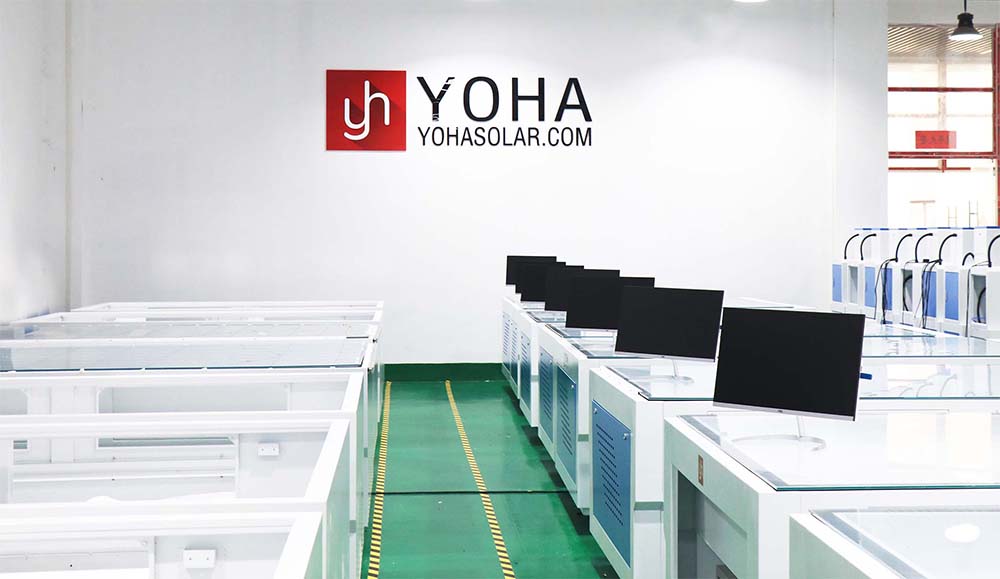Welcome to Wuhan Yoha Solar Technology Co., Ltd!
common problem
Site Map
Language:
 Chinese
Chinese
 English
English
Welcome to Wuhan Yoha Solar Technology Co., Ltd!
common problem
Site Map
Language:
 Chinese
Chinese
 English
English
In the rapidly developing photovoltaic industry today, the PV module IV curve tester has become an indispensable testing device for photovoltaic equipment manufacturers. As a core tool for evaluating the performance of PV modules, the IV curve tester can accurately measure the current-voltage characteristics of PV modules, providing a scientific basis for quality control, performance assessment, and fault diagnosis. This article delves into the working principles, main functions, and application value of PV module IV curve testers in the photovoltaic industry.
The PV module IV curve tester simulates the operating conditions of PV modules under different light intensities, measuring the output current and voltage values to plot a complete IV characteristic curve. This curve visually displays the output characteristics of the PV module at various operating points, including key parameters such as short-circuit current (Isc), open-circuit voltage (Voc), and maximum power point (Pmax).
When a PV module is exposed to light, photons are absorbed by the semiconductor material, generating electron-hole pairs, which form a photocurrent under the influence of the built-in electric field. The PV module IV curve tester scans the module using a precision electronic load, recording voltage and current values under different load conditions to ultimately form the IV curve. This process is typically conducted under Standard Test Conditions (STC): irradiance of 1000 W/m², cell temperature of 25°C, and AM1.5 spectral distribution.
Modern PV module IV curve testers employ high-speed data acquisition technology and advanced algorithms to complete full-curve scans in a very short time, significantly improving testing efficiency. At the same time, high-precision sensors and stable control systems ensure the accuracy and repeatability of test results, providing reliable data support for PV module performance evaluation.

PV module IV curve testers are equipped with multiple core functions, making them essential equipment in PV module production lines and laboratories. The primary function is IV characteristic curve testing, which is the foundation for evaluating PV module performance. By analyzing the curve shape and key parameters, issues such as micro-cracks, hot spots, or poor soldering can be identified.
Maximum Power Point (MPP) tracking is another critical function of PV module IV curve testers. The MPP represents the maximum power a PV module can output under specific light conditions and is a key indicator of module efficiency. The tester accurately scans to determine the MPP position and calculates the fill factor (FF), which directly reflects the energy conversion efficiency of the PV module.
Modern PV module IV curve testers also feature temperature coefficient testing. The output performance of PV modules is significantly affected by temperature. The tester can measure IV curves under different temperature conditions to calculate current, voltage, and power temperature coefficients, providing a basis for predicting module performance in real-world environments.
Additionally, advanced PV module IV curve testers can perform specialized tests such as low-irradiance performance testing, light-induced degradation (LID) testing, and potential-induced degradation (PID) testing, comprehensively evaluating PV module performance under various conditions.
Compared to traditional testing methods, PV module IV curve testers offer significant technical advantages. First is their fast testing speed. Modern testers use high-speed electronic loads and advanced algorithms to complete full-curve scans in seconds, meeting the demands of rapid production line testing.
High testing accuracy is another major advantage. With high-precision sensors and stable control systems, voltage measurement accuracy can reach ±0.1%, current measurement accuracy ±0.2%, and power measurement accuracy ±0.5%, ensuring reliable test results. This high-precision measurement is crucial for efficiency grading and performance evaluation of PV modules.
PV module IV curve testers are also user-friendly. Modern testers feature intuitive user interfaces and automated testing processes, allowing operators to become proficient with minimal training. Test data can be automatically stored and analyzed, generating standardized reports, greatly improving work efficiency.
Strong compatibility is another important feature. Whether for monocrystalline silicon, polycrystalline silicon, or thin-film PV modules, the tester can provide accurate results. It can also adapt to PV modules of different specifications and power levels, offering broad applicability.
In PV module production, PV module IV curve testers play a key role in quality control. Every module on the production line must undergo IV testing to ensure its output performance meets design standards. Through IV curve analysis, process issues such as poor soldering, micro-cracks, or encapsulation defects can be promptly identified, guiding process optimization and improvement.
PV module IV curve testers are also vital in R&D. New PV module technologies require extensive IV testing to validate their performance advantages. The high-precision data provided by testers helps researchers analyze the impact of different materials, structures, and processes on module performance, accelerating the development and application of new technologies.
In PV power plant construction and maintenance, PV module IV curve testers are equally indispensable. During plant acceptance, sample testing of modules ensures their actual performance meets contractual requirements. During operation and maintenance, regular IV testing monitors module performance degradation, identifying faulty modules to maintain plant efficiency.
Moreover, PV module IV curve testers are important in module recycling and reuse. By conducting IV tests on retired modules, their remaining power generation capacity can be assessed, providing a scientific basis for module repurposing and promoting circular economy practices in the photovoltaic industry.
As photovoltaic technology advances, PV module IV curve testers continue to evolve and innovate. Intelligence is a key future direction. Integrated with AI algorithms, testers will automatically identify module defect types and provide more precise fault diagnosis recommendations, significantly enhancing testing intelligence.
High-precision and high-speed testing technologies will continue to improve. Future PV module IV curve testers will achieve even higher measurement accuracy and faster testing speeds, meeting the demands of high-efficiency PV modules and large-scale production. At the same time, the emergence of new PV technologies, such as multi-junction solar cells, will drive corresponding upgrades in tester technology.
Portable PV module IV curve testers will see broader application. With the growth of distributed and residential PV systems, on-site testing demand is increasing. Lightweight, easy-to-operate testers will become more popular. Wireless connectivity and cloud-based data management will also become standard features, facilitating real-time data sharing and analysis.
PV module IV curve testers will also integrate more deeply with other testing equipment to form comprehensive testing systems. For example, linking with EL testers and thermal imagers will provide multi-dimensional module performance evaluation solutions, offering robust data support for PV module quality control.
As a critical testing device in the photovoltaic industry, the technological level and application scope of PV module IV curve testers will continue to rise alongside industry development. Choosing the right PV module IV curve tester is essential for PV equipment manufacturers to ensure product quality and enhance market competitiveness. With ongoing innovation in testing technology, PV module IV curve testers will continue to provide strong support for the high-quality development of the photovoltaic industry.
keywords:TOP
18086473422
MESSAGE
